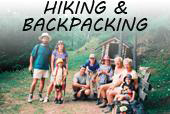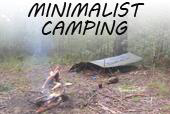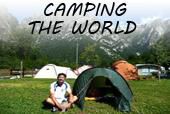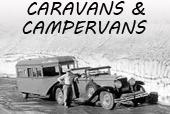
Why do you need survival tips for winter backpacking? Because even with the most careful planning there is always a greater risk with winter camping. Of course, getting lost or having an accident is always a possibility, but cold weather makes either of these a more serious matter.
Winter Survival Tip Number One
Stay warm! This is obvious. Hypothermia is the single biggest danger for backpackers, killing far more people than accidents or wild animals. What isn’t always so obvious is how poor planning and not thinking on the trail leads to getting cold.
One cold autumn day, a friend of mine fell in a stream while we were backpacking. He was soon chilled pretty severely. He naturally thought this was just an accident, but looking back on it now, it is clear that we didn’t have a proper survival mind set.
Streams have to be crossed, of course, but we were crossing this one as evening approached. A better plan would have been to get the hiking done earlier
in the day. Why? Because it leaves time to deal with accidents like this. It may have been sunny enough to get his clothes dried before nightfall, and it is always easier to find fuel for a fire in the daylight.
In addition, we knew the rocks were slippery, yet we crossed as we were. Seeing the potential for a fall, we could have removed our coats and put them in a plastic bag until we were across. Had we taken this simple precaution, my friend would have at least had a dry coat to put on later.
Had this happened in colder weather (it was above freezing) it could have been very serious. You have to stay warm to survive. To stay warm it helps to stay dry. To stay dry, you have to think.
Insulation
Staying warm is about staying insulated. The value of insulation is determined by the thickness of the air around you that isn’t moving. This is the air trapped in your down coat, and between layers of clothing. Always think in terms of insulation thickness. In planning, this means you need more “loft”in your sleeping bag in winter, and more (or thicker) layers of clothing.
In a survival situation, this means you should immediately look for a way to create more insulation. This can mean setting your sleeping bag on a pile of leaves, or sleeping under a pile of dried grass. You might even stuff your jacket (if it is loose) with the fluff from cattail or milkweed plants, in order to increase the insulation value.
More Winter Backpacking Survival Tips
– Check the weather report before you go, and plan accordingly.
– Be careful when it is near or just above freezing. It is easier to get wet than when it is really cold.
– Drink enough fluids. Dehydration can cause a drop in body temperature.
– Down coats are great – if you can keep them dry. They are almost worthless when wet.
– Avoid sweating, to avoid getting chilled from the moisture later.
– Don’t use cotton clothes in winter, because they get wet easily and then don’t insulate well.
– Have more than one way to start a fire (matches, lighter, fire starter, skills).
– Learn to make a fire in cold wet conditions, and practice.
In 2006, I was trying to climb Crestone Peak here in Colorado, after an early snow. I gave up at about 13,000 in four feet of snow. I was in running shoes, and was soaked from the knees down. It would be below freezing that night, and I had just a tarp and 17-ounce sleeping bag. Does that sound risky? I was actually well prepared.
First of all, it was clear and sunny, and forecast to remain so for days. Back down near the lakes the snow was patchy, with many areas of dry grass. I quickly made a thick mattress of dry grass and thistle stalks to sleep on. I had quit early, so I had many hours to dry my shoes, socks and pants in the sun. They were completely dry long before dark.
As a back-up plan, I had a small fire laid, with a piece of bark covering it in case of rain or snow (I never needed to light it). I drank plenty of water and had fatty foods, which create heat as they digest. I also had more dry socks, and other necessary supplies, despite my 11-pound total packweight. As you can see, survival when winter backpacking is as much about planning and thinking as it is about good gear.












